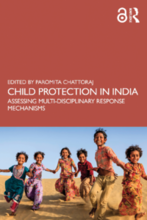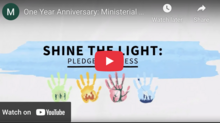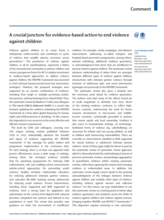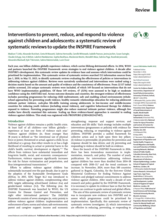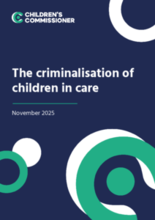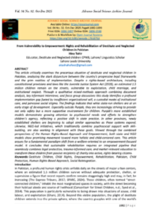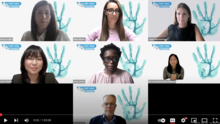Displaying 1 - 10 of 1087
This book offers a comprehensive exploration of the institutional, legal, and social frameworks surrounding child protection in India. Anchored in a multidisciplinary approach, the book brings together insights from law, social work, psychology, education, and public policy to examine how various systems interact in addressing the issues related to protection of children from abuse, neglect, trafficking, and exploitation.
The anniversary event marking one year since the 2024 Global Ministerial Conference brought together global leaders, ministers, experts, and advocates to celebrate progress toward ending violence against children and to renew commitments for the y
This Lancet commentary highlights a major update to the evidence base for preventing violence against children, emphasizing findings from a new systematic review that strengthens and refines the INSPIRE Framework’s intervention strategies. It underscores that several approaches—such as parenting programs, whole-school violence prevention, healthy relationships education, and cash-plus life-skills initiatives—are proven effective, while others lack sufficient evidence and require reevaluation.
A decade after the launch of WHO’s INSPIRE Framework, this systematic review updates the global evidence on what works to end violence against children. Analyzing 216 systematic reviews, it identifies the most effective interventions—including parenting programs, safe school environments, healthy relationship education, cash-plus life-skills training, and cognitive behavioural therapy—and underscores the urgent need to scale up these proven approaches worldwide.
The Children’s Commissioner’s report “The Criminalisation of Children in Care” reveals a deeply concerning pattern: children in care in the UK are disproportionately drawn into the criminal justice system, often for low-level incidents that, in a family setting, would be handled without police involvement. To address this, the Commissioner calls for a strengthened, statutory protocol among police, local authorities, and youth services; better diversion pathways; a more child-friendly prosecution process; increased legal aid and training; more stable, high-quality care placements; and improved data sharing to monitor and prevent harmful police involvement.
This article analyzes the gap between Pakistan’s progressive child protection laws and the harsh realities faced by the country’s 1.5 million destitute and neglected children, highlighting how weak implementation, custodial care models, and social stigma undermine their rights and well-being. It argues that meaningful rehabilitation requires shifting from welfare-based responses to empowerment-focused, holistic support systems that integrate legal protection, trauma-informed care, and market-relevant education.
Corporal punishment is the most commonly experienced form of violence against children. Evidence shows it harms children’s health and offers no benefits for children, parents, or societies.
This technical report, from WHO, describes the prevalence, risk factors for, and consequences of child corporal punishment, which it defines as “any punishment in which physical force is used and intended to cause some degree of pain or discomfort, however light”.
This short film was produced by the Global Youth-Led Movement on Ending Violence Against Children for the launch of the World Health Organization’s first-ever report on the public health impact of corporal punishment of children (August 2025).

The Framework for Action is an interagency initiative, led by UNICEF, Save the Children and World Vision, driving global action behind efforts to strengthen child protection systems, mobilising the complex array of stakeholders at sub-national, national, regional and global levels to implement pledges and commitments to end violence against children.

